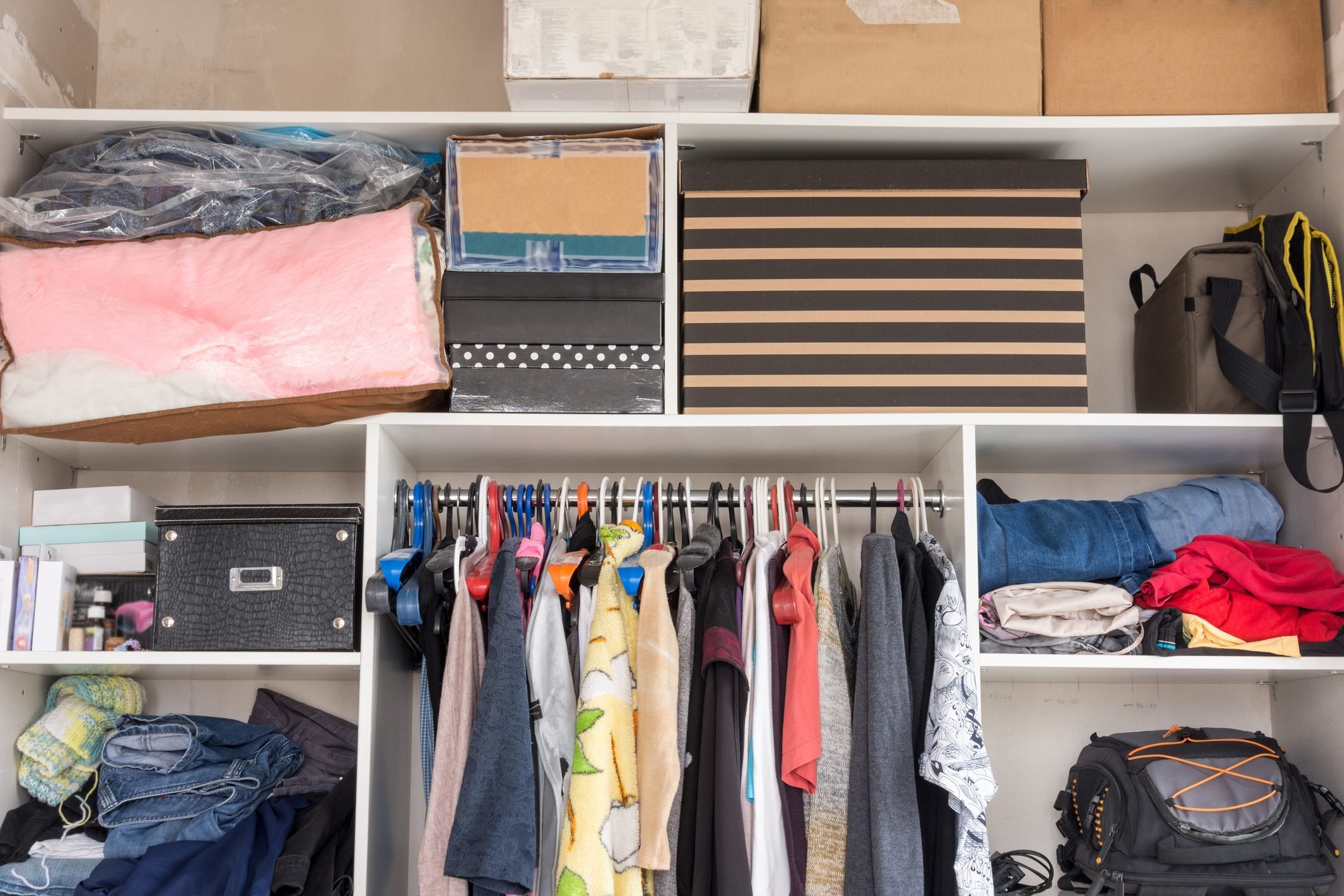Books, toys, tools. Clutter builds up in no time. What is clutter, and why is it important to reduce it?

What Is Clutter and What Can I Do About It?

Everyone deals with clutter. Even extremely organized people declutter periodically. That’s probably why they’re so organized. And maybe they know clutter doesn’t just make a home look messy; it negatively affects our mental health.
“A cluttered and chaotic home often reflects a cluttered and chaotic mind,” says Brenda Scott, owner and operator of Tidy My Space. The inability to find things, constantly moving one thing to find another, being late for jobs or appointments — it all can lead to stress and frustration, Scott says.
“Clutter can have a negative effect on your emotional wellbeing,” says Lauren Saltman, a professional organizer and owner of Living. Simplified. “Looking around your home should give you a sense of peace, knowing that everything you own in your home is useful to you and your family.”
On This Page
What Is Clutter?
“Clutter is anything you are keeping in your home that doesn’t serve a purpose, that you don’t use and that doesn’t bring joy to your life,” Saltman says. That could be items handed down by family members, gifts you received but don’t need, clothing you no longer wear and books you won’t read, Saltman says.
Scott adds: “Clutter is anything that doesn’t have a home. It’s the stuff that no one knows where it belongs, so it gets dropped anywhere and everywhere.” You’ll know it by the constant act of moving it around to find what you’re actually searching for, Scott says.
Clutter vs. Hoarding
When should you be concerned that your messy home might signal a deeper problem?
Scott says one distinction between clutter and hoarding is whether you can still use the space for its intended purpose. If piles of items haven’t been moved in a while, hindering your use of the room, you may be approaching the line between clutter and hoarding.
Scott recommends comparing your rooms to the images in Randy Frost’s clutter rating scale. Frost is a hoarding expert and psychology professor at Smith College, and the author of many definitive books on hoarding.
It’s important to reduce clutter before it becomes a massive problem. Hoarding can lead to pest infestation, health issues and even eviction, Scott says.
What Your Clutter Is Trying To Tell You
“Clutter buildup is usually in the areas with the most traffic,” Scott says. That means near your home’s entrances, where we tend to drop things like mail and packages. Also kitchen and bathroom counters, nightstands and the floor. This can point to an absence of good storage solutions to keep it under control, Scott says.
Clutter can also indicate a connection that goes beyond the physical. “People tend to hold onto things because of past memories or guilt,” Scott says.
Keeping things that are useful and needed is OK. When when we keep something out of obligation — maybe because it’s from a deceased loved one, or it cost a lot of money — it’s time to sell, re-gift or donate it. There are tactics to help, too, like taking a photo of the item, or passing it on to an appreciative new home.
Either way, it’s important to think about what you bring into your home. If you’re trying to reduce clutter, pause before you buy new or even used things. At gift-giving season, remind friends and family you prefer experiences to things, Saltman says. And it’s OK to decline hand-me-downs from relatives if you can’t use them.
How To Declutter
“Getting started on your decluttering journey can feel overwhelming,” Saltman says. But don’t worry. Your entire home doesn’t need to be decluttered in a day, or even a week.
Scott says people struggle to start because we tend to focus on the enormity of the problem and how long it’s going to take. To make it more manageable, break up your decluttering project into small chunks or areas at a time. Be sure to read up on these decluttering tips for hoarders.
Here are some other tips to help:
Put it on your calendar
Saltman says to schedule several 15-minute sessions per week. Pick days you know you’ll be home, and don’t forget to set reminders. Start with one flat space (like a section of countertop), one shelf or one drawer. Remember: You don’t have to tackle this all at once.
Sort and donate
Once you decide what space you’re going to declutter, Saltman says to bring three boxes and a trash bag with you. Label the boxes “donate,” “recycle” and “relocate.” Go through the area and sort the clutter into the three boxes and the bag. Then organize what’s left. Over time, use this method to go through your entire house, room by room.
Use the 20/20 rule
Can’t decide whether to keep something? “If you can replace the item within 20 minutes for less than $20, then it’s time to let it go,” Scott says. This works great for multiples of small things, like stacks of notepads, hair accessories, rolls of tape and a drawer full of pens.
Stay on track
Saltman says to follow the “one in, one out” rule. If you buy something new, get rid of whatever you’re replacing. New pair of shoes? Donate or trash the old pair. This goes for everything in your home, from kitchen utensils and books to clothes and toys.




















